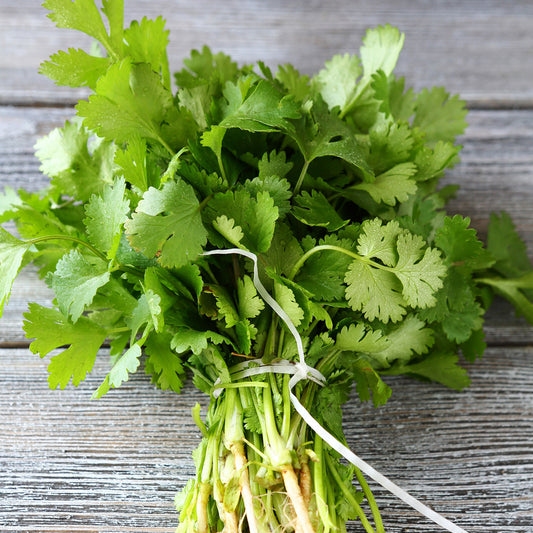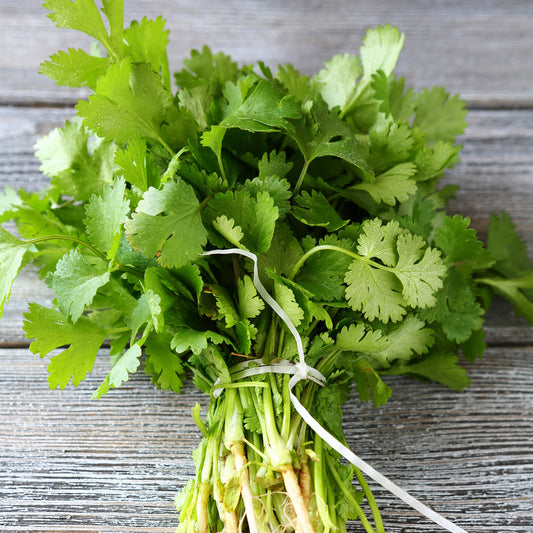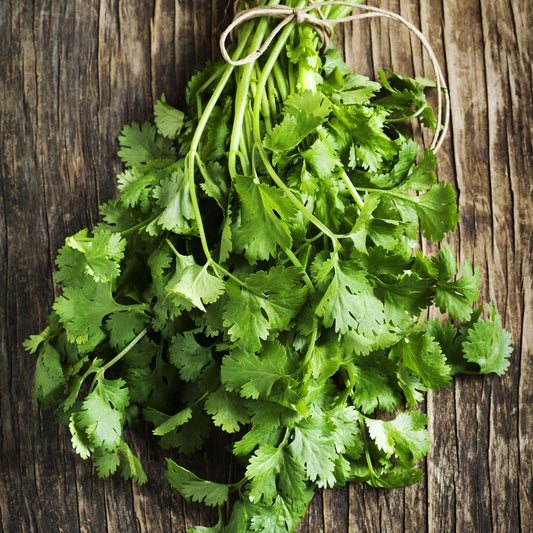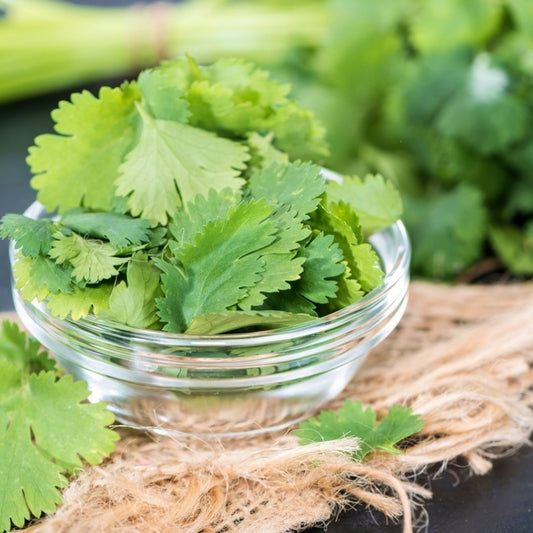-
main-collection-product-grid

Cilantro/Coriander (Organic) Seeds - Long Standing
Slow to bolt variety, must have for Asian and Mexican cookingCilantro/Coriander (Organic) Seeds - Long Standing
Slow to bolt variety, must have for Asian and Mexican cookingRegular price As Low As $6.29Regular priceUnit price per -
main-collection-product-grid

Cilantro/Coriander Seeds
Fresh or dried, adds a delicious flavor to soups, salads and salsaCilantro/Coriander Seeds
Fresh or dried, adds a delicious flavor to soups, salads and salsaRegular price As Low As $4.49Regular priceUnit price per -
main-collection-product-grid

Cilantro/Coriander Seeds - Fiesta Green
Prolific annual, easy to growCilantro/Coriander Seeds - Fiesta Green
Prolific annual, easy to growRegular price As Low As $4.49Regular priceUnit price per -
main-collection-product-grid

Cilantro/Coriander Seeds - Leisure
Favorite in hot weather climates, slow to boltCilantro/Coriander Seeds - Leisure
Favorite in hot weather climates, slow to boltRegular price As Low As $4.49Regular priceUnit price per
About our cilantro seeds
- Easy to grow annual that serves as an excellent kitchen staple
- Succession planting every two to four weeks will ensure constant cilantro for your kitchen
- Let some plants go to seed-you can dry them for use in future planting
- Adds a fresh zest to soups, salads, and beyond
Cilantro's great versatility from flavorful leaves to tasty seeds and roots
Cilantro, also called Chinese parsley, is a hardy annual cool season crop. This aromatic herb is alive with a flavor of both citrus and spice that enlivens Mexican, Chinese, Southeast Asian, and Indian foods. Although it is usually just the leaves of the fresh cilantro plant that are the most popular, the pungent seeds (known as coriander), and the tangy roots promise a tasty treat as well.
Cilantro seeds are actually a hard husk that contains two seeds. Crush the husks and then soak your seeds for 24 to 48 hours. Remove from water and allow seeds to dry.
How to grow cilantro no matter your location
Direct sow cilantro seeds in the early spring, as soon as the threat of frost has passed. In warmer zones, cilantro can also be sown in the fall through the spring. Seeds may be sown at intervals of two to three weeks if a continual harvest is desired. Cilantro seeds prefer cool, but sunny conditions. Soil temperatures that reach 75°F will cause plants to bolt. Choose soil that is light and well-draining. Sow seeds in rows, spaced about 12 inches apart, and cover with 1/4 inch of soil.
How to harvest cilantro leaves
Once seedlings reach about two inches in height, thin out plants to a spacing of three to four inches apart. Seeds will germinate in approximately seven to ten days. You can harvest your leaves any time, cutting the fresher leaves towards the top, rather than the older, more mature leaves closer to the bottom. Unlike most herbs, cilantro can be consumed fresh and does not need to be dried for storage or later use.
Once the plant bolts (producing a stalk on which flowers will grow) the leaves lose their flavor, so pinch back frequently to keep flowers at bay. Growing plants in partial shade during a hot spell can help prevent bolting.
Cilantro has great health properties
Cilantro offers a multitude of health benefits. It contains phytonutrients and antioxidants that provide anti-inflammatory and antibacterial properties.
For more information about planting, growing, and caring for cilantro/coriander seed, see the Cilantro Seeds Planting Guide.



